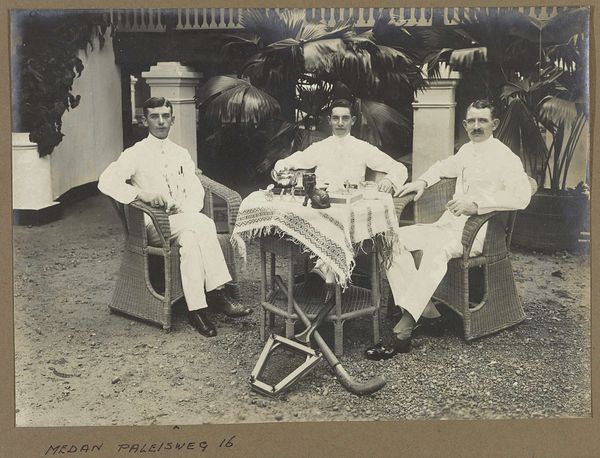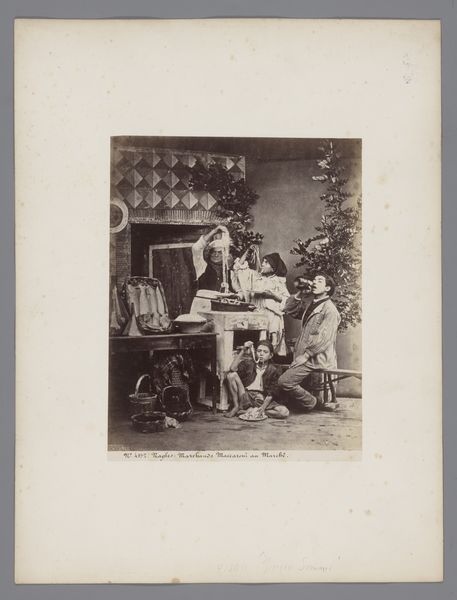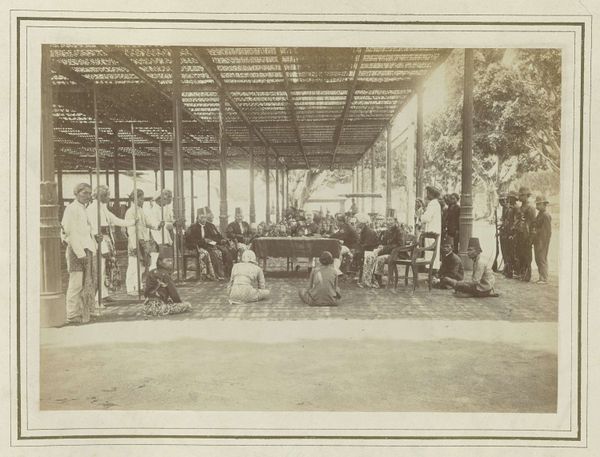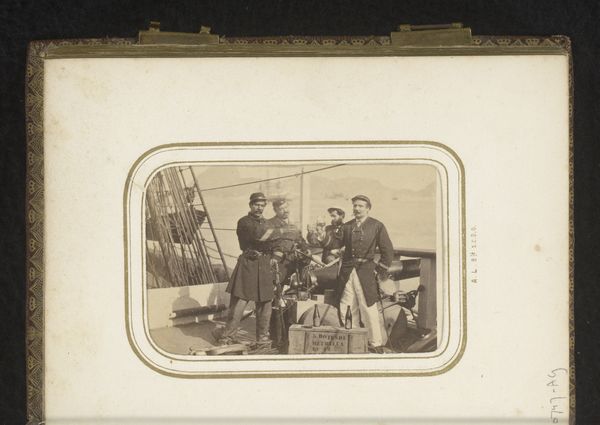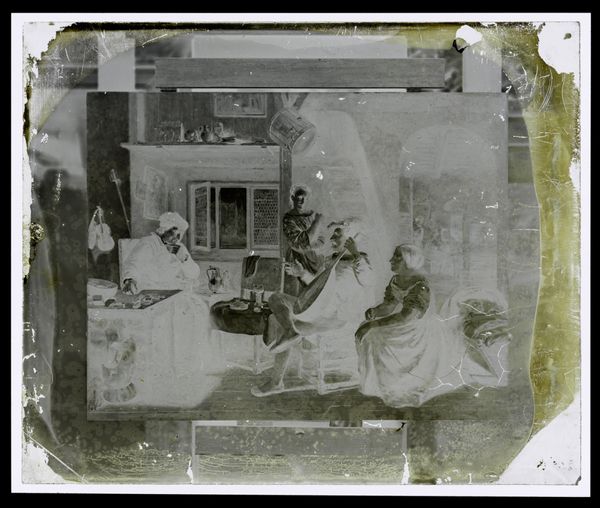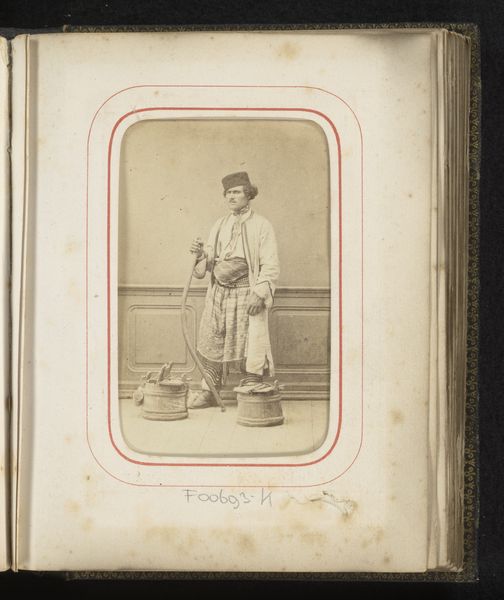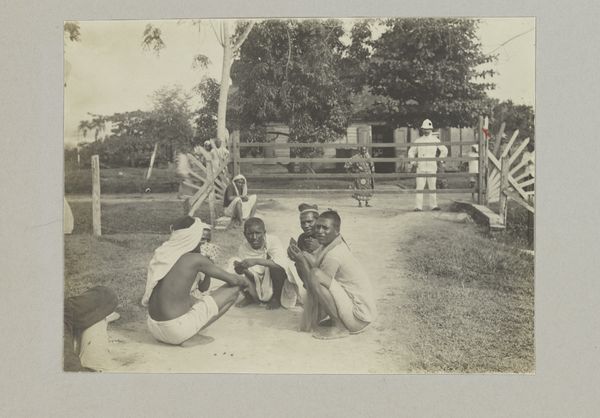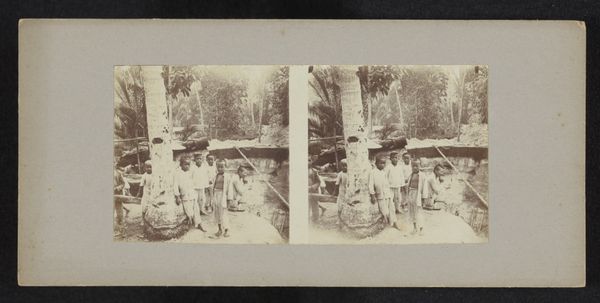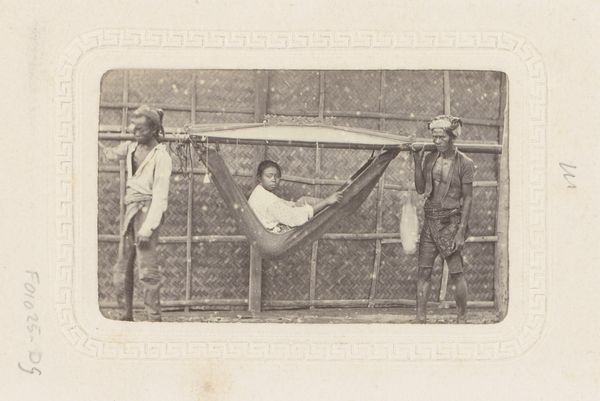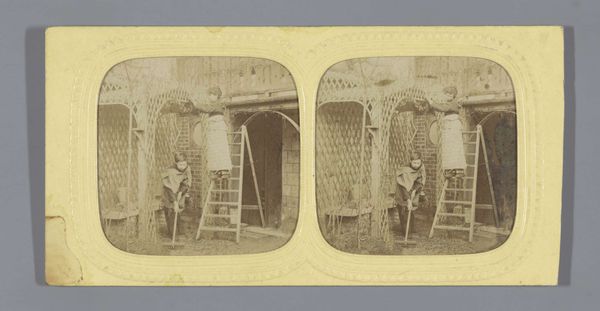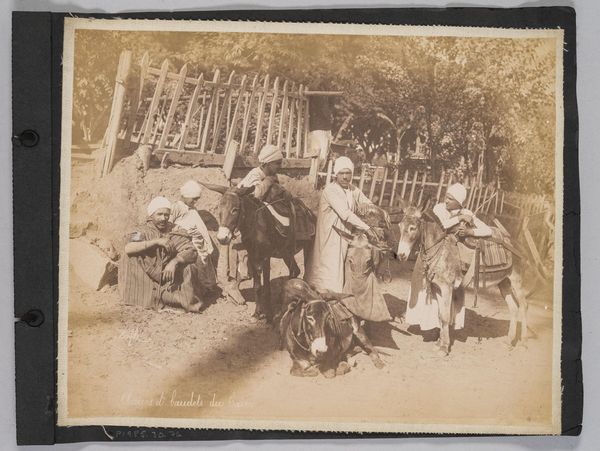
gelatin-silver-print, photography, gelatin-silver-print
#
portrait
#
gelatin-silver-print
#
asian-art
#
archive photography
#
photography
#
gelatin-silver-print
#
realism
Dimensions: height 85 mm, height 52 mm
Copyright: Rijks Museum: Open Domain
Editor: This is a gelatin-silver print titled "Portret van twee Indonesische verkopers," or "Portrait of two Indonesian vendors" by Woodbury & Page, made sometime between 1857 and 1880. It’s intriguing—a staged photograph depicting what appears to be a daily scene. What cultural narratives or visual symbols can you unpack from this image? Curator: The very act of staging and capturing this scene through photography transforms the daily into something meant to be preserved, contemplated. Note how their clothing is carefully arranged. Does it indicate status? Look at the backdrop too, and how the setting frames their interaction, becoming a signifier itself. What emotions do you perceive through this constructed gaze? Editor: There's definitely a performative element, and a sense of distance, perhaps because it’s a posed scene. I’m curious about their trade: what are they selling? Curator: Yes, there is distance – constructed images often have this affect. Their wares seem secondary to their presentation as figures within a colonial narrative. I think understanding the gaze of the photographers—Woodbury & Page—is essential. They were creating images for a European audience hungry for exoticized views of the East. So, we’re not just seeing a portrait; we are also seeing a carefully constructed representation of Indonesian life filtered through a Western lens, rife with symbolic implications. Can you spot the differences in dress, posture, expression? Editor: It’s like the photograph is trying to capture "Indonesian-ness" for someone else. It feels...complicated. It definitely gives me something to think about, looking at art through the colonial gaze, and how that shapes its cultural memory. Curator: Exactly. Photography served as a powerful tool for constructing and perpetuating cultural perceptions. We see not just two vendors but an era's ambition to catalogue and classify an entire people and their way of life. Seeing it from both perspectives brings another understanding to this image.
Comments
No comments
Be the first to comment and join the conversation on the ultimate creative platform.

